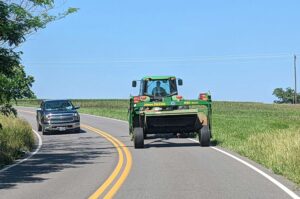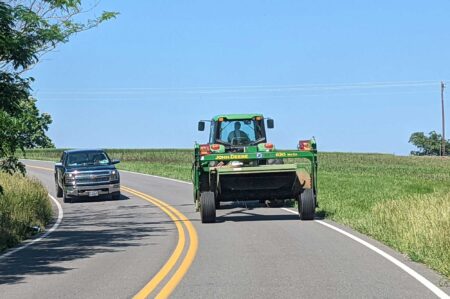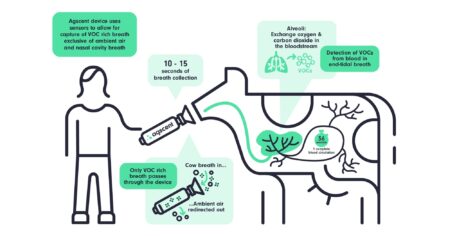On June 30, 2025, the USDA will release the annual Acreage report with corn and soybean planted acre estimates. In 15 of the past 20 years, corn acres have increased from USDA’s March Prospective Plantings report to June’s Acreage report. This year, Farmers Business Network (FBN) is anticipating a net reduction in planted corn acres by 300,000 acres, according to FBN’s U.S. acreage report.
“An acreage shift lower for corn is not a common occurrence,” said Cody Bills, director of market data and analysis at FBN. “The average acreage change is an increase of .47 million acres.”
Corn
FBN found farmers planted 95.02 million corn acres this year, down 306,000 acres from USDA’s March Prospective Plantings report that put corn acres at 95.33 million. The March report was a survey of what farmers anticipated planting this year. The June 30 USDA Acreage report asked farmers how many acres they actually planted.
In FBN’s survey, farmers in Nebraska, Missouri, and Wisconsin indicated they planted more corn, although that was more than offset by decreases in the southern portions of Illinois, Indiana, Ohio, Pennsylvania, and Tennessee. Wet weather and difficult planting conditions helped drive the reduction in corn acres, according to FBN. This was supported by the National Weather Service’s Departure of Normal Precipitation maps that showed above normal precipitation over the last 60 days in the eastern Corn Belt.
Weather appeared to be the big driver in the change, as the soybean-to-corn ratio provided no clear incentive to transition from corn to soybeans.
Soybeans
FBN found farmers planted 83.70 million soybean acres this year, up 202,000 acres from USDA’s March Prospective Plantings report that put soybean acres at 83.50 million.
Soybean acreage changes are more of a coin flip, according to Bills. In the last 10 years, four years had increased, four years had decreased, and two years were unchanged. In the four years where soybean acreage increased, the average increase was .725 million acres, according to FBN.
FBN’s survey did not collect what soybean acres were originally intended for, but the increases in acreage overlapped with corn acreage decreases in Illinois, Indiana, Kentucky, and Ohio. The increase in the eastern Corn Belt acreage was partially offset by sharp declines in soybean acres in Arkansas and Mississippi, which experienced heavy rains and floods during their planting window.
Anticipated Market Reaction
If the USDA numbers align with FBN’s survey, will it be enough to move the markets?
“I don’t think it will be enough to change the fundamental dynamics of the corn market,” Bills said. “The market is dealing with two major headwinds, including non-threatening weather conditions across the U.S. and a large Brazilian second crop, which appears to be bigger than previously expected.”
On June 24, Agroconsult adjusted its forecast for Brazil’s second corn crop to a record 123.3 million metric tons, up 10.4 million tons over their May estimate.
“This is a huge month-over-month change and suggests further pressure on the corn market,” Bills added.
Soybeans are facing similar pressures with a strong start to the growing season and good weather. “If the USDA releases acreage numbers in line with our forecast, that only points to a 47 million bushel decline in new crop corn production and a 12 million bushel increase in soybean production, if you hold the rate of abandonment and yield steady from June’s WASDE report,” Bills said. “In my opinion, that isn’t a big enough adjustment to change the fundamental stories for either corn or soybeans.”
What Bills anticipates will have a bigger market impact is the Environmental Protection Agency’s proposed 2026/2027 rules for the Renewable Fuel Standard. “That has the potential to be a major bullish factor if the proposal can be finalized without any significant changes,” he said.
FBN Survey Methodology
This was FBN’s fifth annual U.S. Acreage Report. FBN members across the U.S. were asked about their planting plans for the 2025 season. Responses that were incomplete or inconsistent were removed from the analysis. All personally identifying and farm-related information was excluded from the published survey results. The crop acreage estimates were created by FBN’s crop marketing advisory analysts.
Multiple Acreage Reports
The Kluis Commodity Advisors/Successful Farming Acreage Survey revealed American farmers planted over 1 million more corn acres for the 2025/2026 crop year than USDA previously forecast. According to the survey results, the acreage for corn and soybeans combined is 179.3 million vs. 178.8 million in USDA’s March report. The survey attributes this increase to a 500,000-acre reduction in spring wheat.


:max_bytes(150000):strip_icc()/r4d092124_rrd1-5d0657ac040743a2a4c5ebf998902de0.jpg)




:max_bytes(150000):strip_icc()/20230627-tyler-zimmerman-074_corn-a95bcba138ca417a8815b22c6086ce91.jpg)

:max_bytes(150000):strip_icc()/Markets-1-Cattle-dramatic-up-5-0687ebaec7fc487bac9c10a7f442eea8.jpeg)


